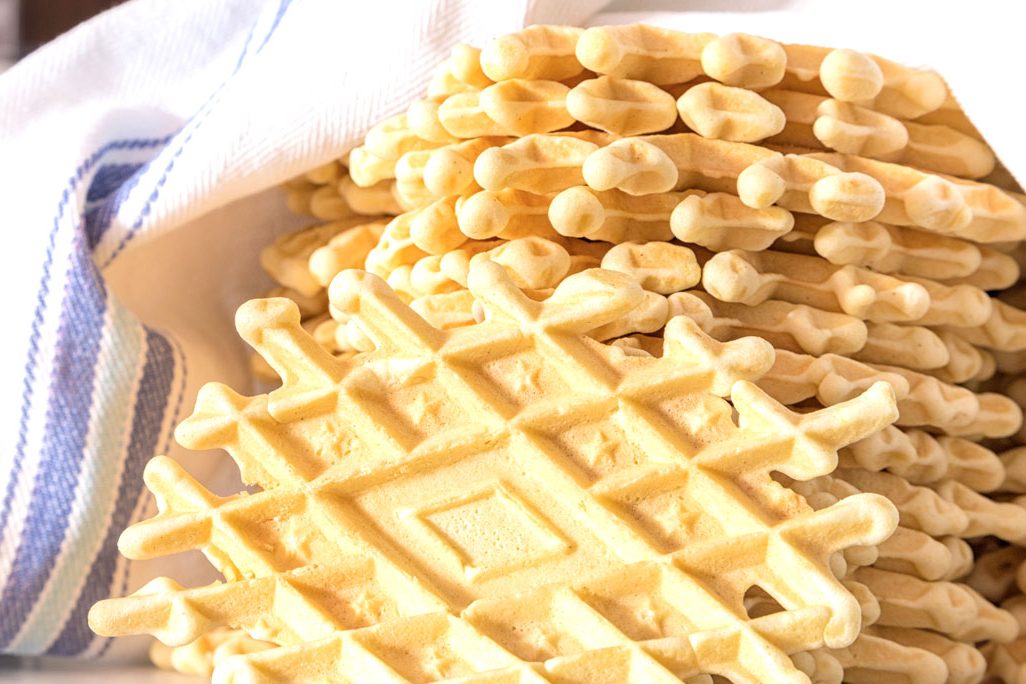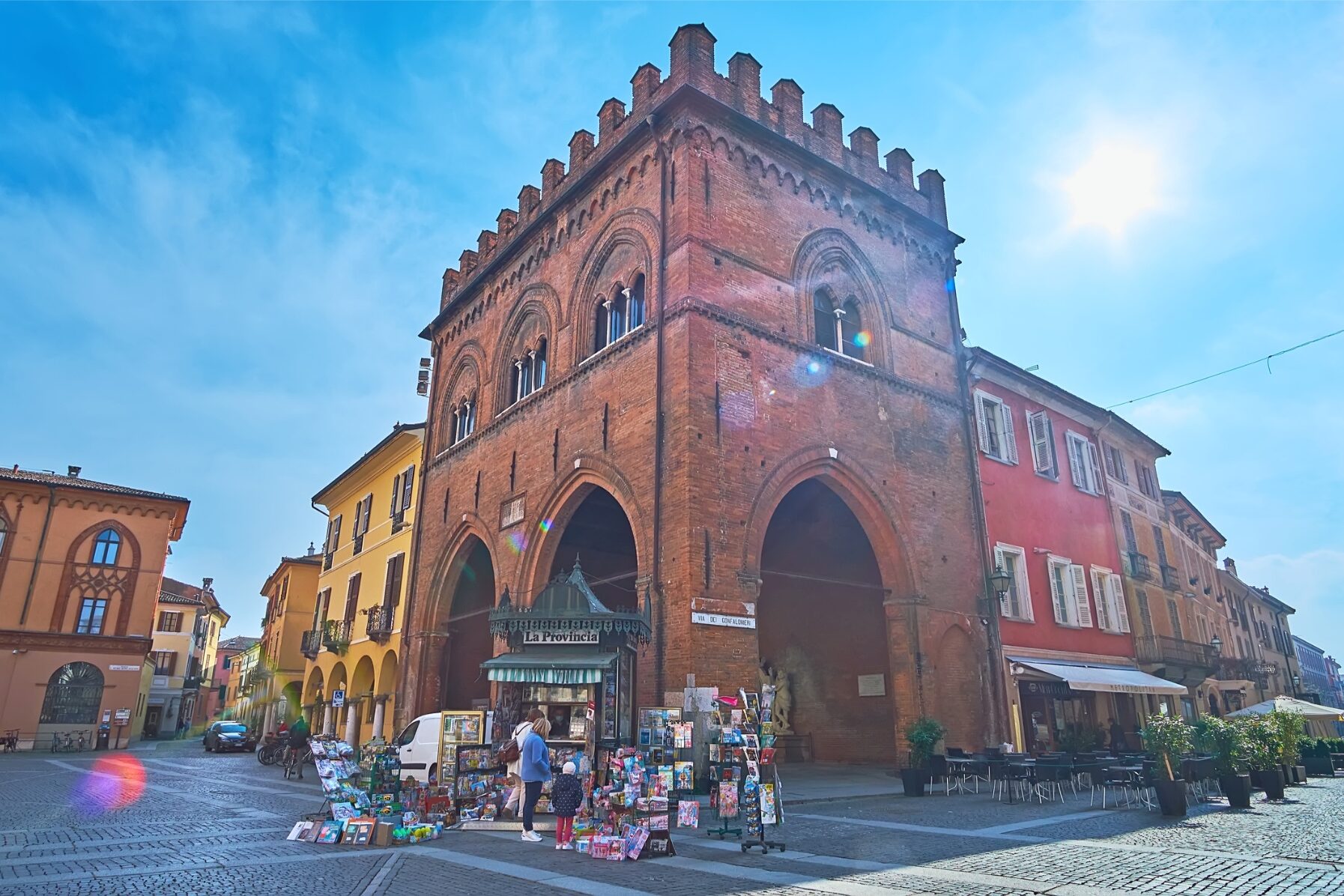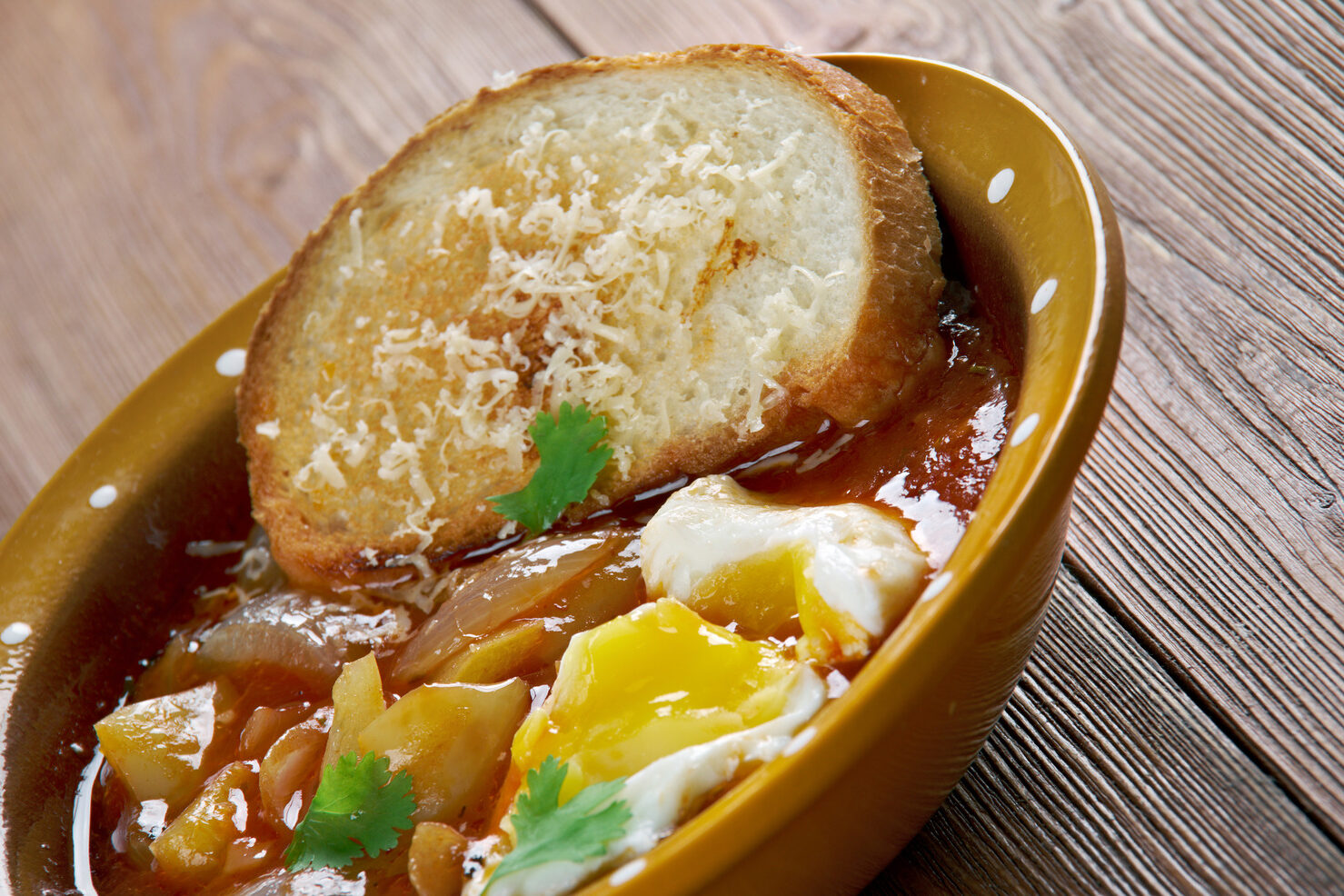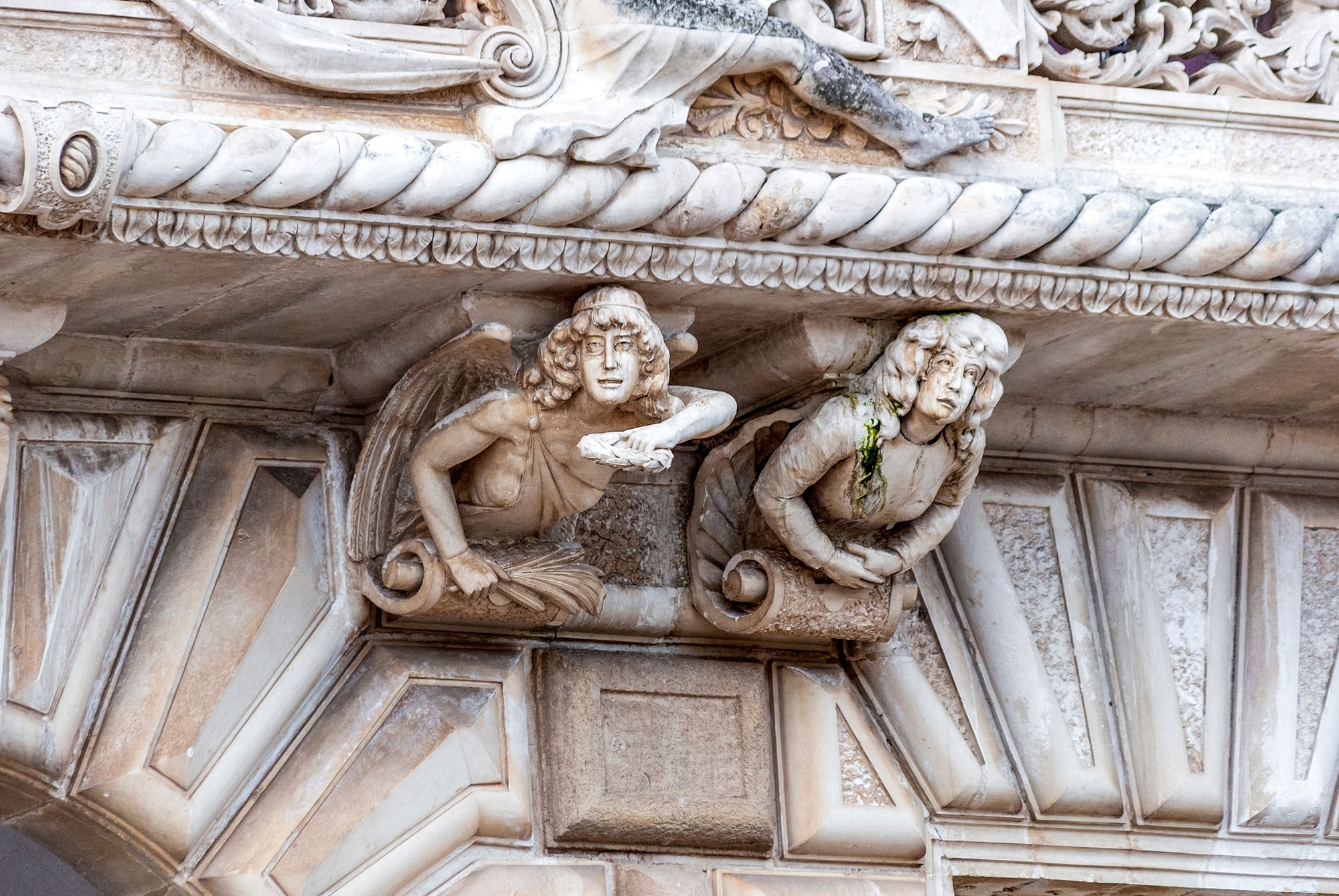With holiday feasting over, we are all looking for lighter, yet nutritious food. Take a look back into history and meet the humble cicerchie, Lathyrus sativus. This hearty legume with a woodsy flavor has a tradition that can be traced all the way back to the legionaries of the Roman Army. Versatile and delicious in salads, soups and vegetable stews, it is a relative of both ceci and fave. Cicerchie, first cultivated in the Middle East thousands of years ago, made its way along the Mediterranean Coast to Greece and eventually to Rome, up to France and on to Spain.
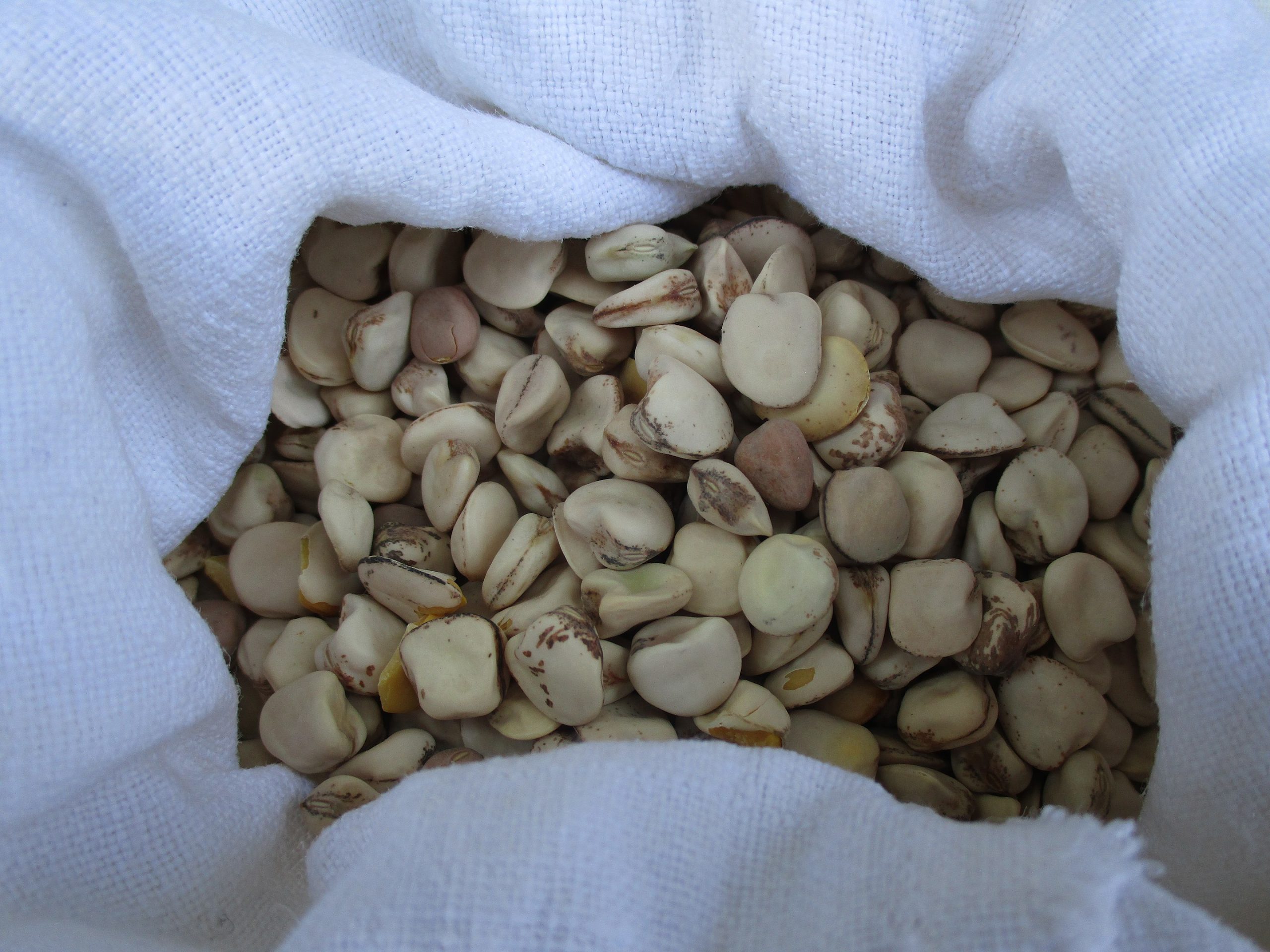
Known in the modern world as cicerchie, grass pea or vetch, the people of the Roman Empire knew it as cicercula, and soup made from it fueled the march of the Roman Army. This hearty, pest-resistant plant thrives where others wither, and has played a major role in the agriculture and cuisine of the central and southern Apennines, especially Abruzzo.
It has sustained people through good times and bad, and, thankfully for us today, brother and sister team Alessandro and Rosalba Cappelletti, owners of La Valletta Farm, are providing us with high quality cicerchie. Their farm, an entirely organic operation, on Italy’s verdant Colfiorito Plain near the border of Le Marche and Umbria, specializes in heritage foods native to the region, and is a major player in the burgeoning interest in traditional foods.
Cicerchie have one characteristic worth addressing. The legume contains the neurotoxic amino acid ODAP (beta-oxalyl-diaminopropionic acid) associated with neurolathyrism, a neurodegenerative disease. The disease is seen when cicerchie are consumed as the main component of the diet – as in times of war or famine. I contacted international expert Dr. Ferdinand Lambein of the Institute for Plant Biotechnology at the University of Ghent in Belgium and inquired about safe levels of consumption. He told me that “casual consumption of grass pea as one component of an otherwise balanced diet, bears not any risk of toxicity.” Thus, the occasional bowl of soup or stew poses no threat.
Dried cicerchie look like small off-white dehydrated kernels of corn. They must be soaked for a full twenty-four hours prior to cooking, during which time they will swell and take on a yellowish cast. Do not add salt to the cooking water until they have softened to avoid toughening the skin. This hearty soup is packed with tasty black kale (also known as lacinato, dino kale and Tuscan kale. A dollop of pesto adds a flavor boost. This is perfect for a chilly Winter night.
Cicerchie and Black Kale Soup
serves 6
For the soup
•12 ounces dried cicerchie
•1 yellow onion, halved top to bottom, sliced very thinly
•2 ribs celery, cut in ¼ inch dice
•3 carrots, cut in ¼ inch dice
•1 ½ bunches black kale, cut crosswise in ½ inch ribbons, inner stem removed and discarded
•¾ cup green peas, fresh or frozen
•4 cups brodo di pollo ( chicken broth)
•1-2 teaspoons peperoncino flakes (red pepper flakes)
•Salt and pepper
•3 tablespoons olive oil
Rinse and pick over the cicerchie, discarding any discolored beans. Place them in a large bowl and cover with 3 inches of cool water. Soak for 24 hours, changing the water two or three times as it clouds. Discard any pieces of the tough indigestible outer skin that come away.
Drain and rinse the cicerchie. Transfer them to a 4-quart pot, and cover with 3 inches of cold water. Bring to a boil over high heat. Reduce to lively simmer, and continue cooking until the beans begin to soften, about 40 minutes, skimming off and discarding foam.
Meanwhile, pour olive oil into a separate heavy bottom 6-quart Dutch oven. Add the sliced onions and ½ teaspoon peperoncino flakes. Cover and cook over low to medium low heat about for 20 minutes, or until the onions have begun to caramelize, stirring occasionally to prevent scorching.
Remove the cover, add the celery and carrots, cook 15 minutes more. Add the stock. Drain the cicerchie and add them to the pan. Bring to a boil over high heat. Reduce to a simmer and continue cooking about 30 minutes more, or until the beans are done to your liking. Add chopped kale, peas, ½ teaspoon peperoncino flakes (or more if desired) and 1 teaspoon salt. Cook about 15 minutes more, until kale has softened. Add a generous dose of freshly ground black pepper, and check for seasoning, adding more salt, pepper and peperoncino if desired. Ladle into bowls, top with a tablespoon of pesto, and serve.
For the pesto
•1 cup basil leaves, packed
•1 clove garlic
•¼ cup olive oil
•2 tablespoons grated Parmigiano-Reggiano
Combine, basil, oil, and garlic in workbowl of food processor fitted with metal knife. Process the ingredients until finely ground and thoroughly combined. Scrape the pesto into a small bowl, add cheese and combine well. If you are not using the pesto right away, cover it with a thin film of olive oil to prevent oxidation. Store it in the refrigerator up to one week.
La Valletta cicerchie are available from Gustiamo.com
Questions? Email me at adri@AdriBarrCrocetti.com or visit at AdriBarrCrocetti.com
Receive more stories like this in your inbox



